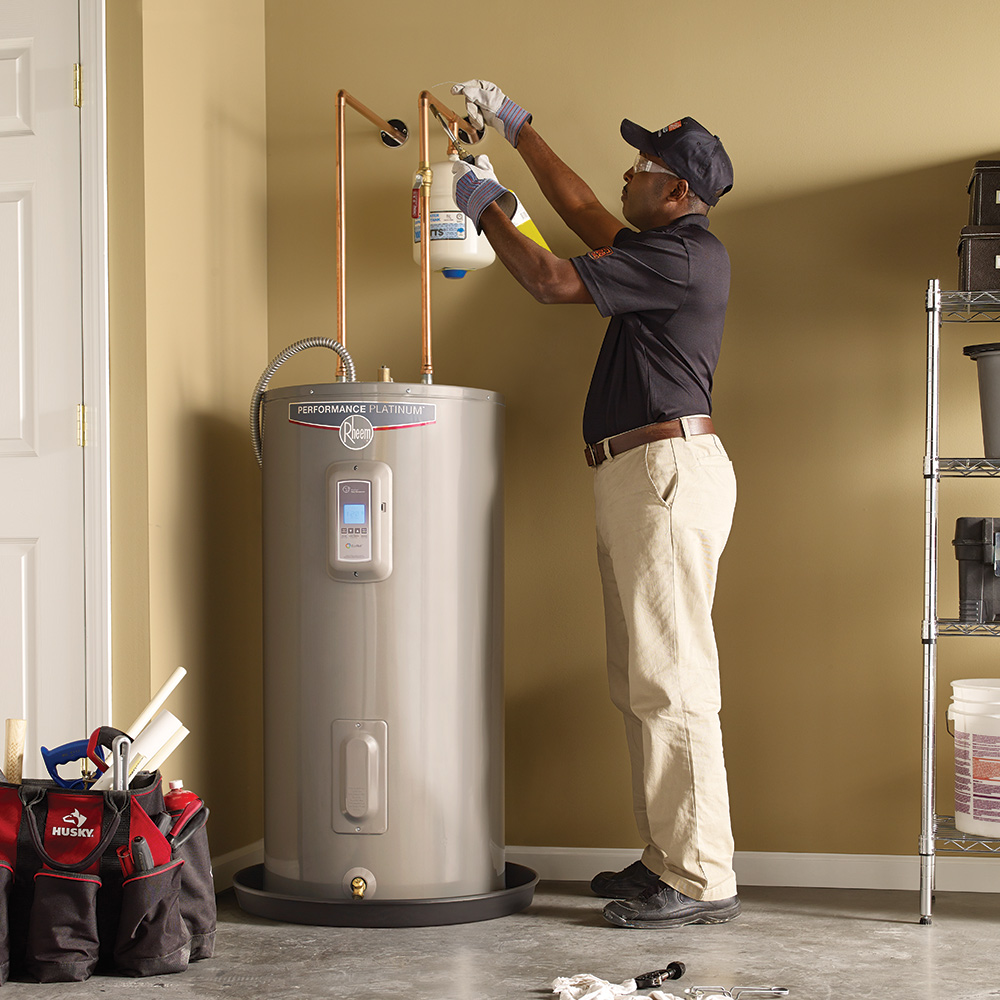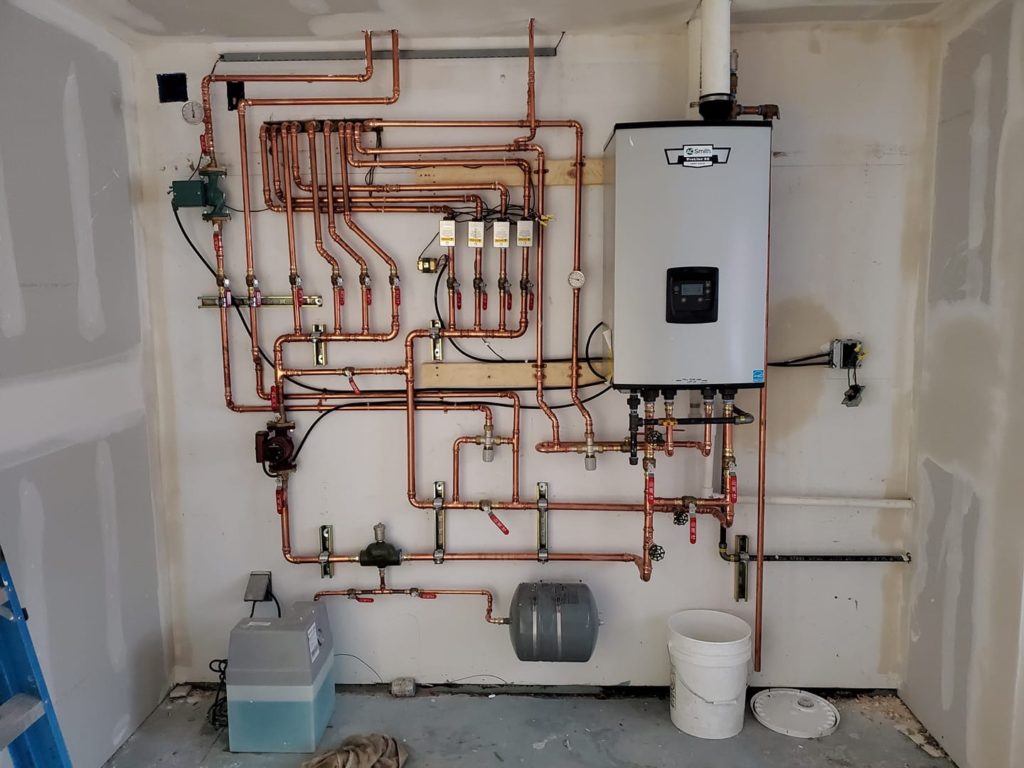Trustworthy Pipe Repair Solutions to Minimize Expensive Water Damage
Trustworthy Pipe Repair Solutions to Minimize Expensive Water Damage
Blog Article
Total Overview to Water Heating SystemInstallation and Replacement
Understanding the complexities of water heating unit installation and replacement is crucial for homeowners seeking to make certain performance and reliability in their hot water supply. From selecting the ideal kind and dimension to carrying out a seamless installation process, numerous variables need to be thought about to avoid common challenges.
Sorts Of Water Heating Units
When thinking about water heating unit installation and replacement, it is vital to understand the different kinds of water heating systems offered on the market. The most typical types consist of storage tank hot water heater, tankless hot water heater, heatpump water heating systems, and solar water heating systems.
Storage tank hot water heater are standard systems that store a details volume of warm water, making them easily offered when needed. They are usually less pricey in advance but may sustain higher power costs gradually due to warmth loss. In contrast, tankless water heating systems supply warm water as needed, removing the need for storage space. They are energy effective and can conserve space, but their first expenses are generally greater.
Heatpump hot water heater use power to transfer heat from the air or ground to warm water, supplying significant energy financial savings yet requiring more area and details installation conditions. Solar water heating units harness solar power to warm water, supplying a green option with potential long-term cost savings, although they typically need a backup system for gloomy days.
Recognizing these alternatives makes certain informed decisions concerning setup and replacement, dealing with particular needs and preferences.
Selecting the Right Size
Choosing the suitable size for a hot water heater is essential to make sure optimum efficiency and effectiveness. A system that is as well little will battle to meet house needs, resulting in inconsistent warm water schedule and raised energy consumption. On the other hand, an oversized hot water heater can lead to unneeded energy waste and greater utility costs.
To establish the best dimension, consider the house's top warm water usage. This can be computed based upon the number of owners and their common warm water needs. A family of four may require a water heating system with an ability of 50 to 80 gallons, depending on the usage patterns, such as simultaneous showers and laundry.
In addition, assess the recuperation price, which measures how swiftly a heater can renew warm water after it has actually been used. For tankless designs, concentrate on the circulation rate, measured in gallons per minute (GPM), to guarantee it fulfills the home's synchronised need.

Installation Process Review

Next, the old device should be disconnected and gotten rid of, taking care to adhere to regional codes and policies pertaining to disposal. When the old unit is out, the brand-new water heating unit can be placed in position. This step includes connecting the water lines, guaranteeing that all installations are leak-free and protected.
After developing water connections, it's necessary to link the power supply, whether electrical or gas, following the supplier's directions diligently. When all links are made, the system should be filled up with water, and the power can be turned back on. Ultimately, it is necessary to look for leaks and ensure the water heating system is functioning appropriately before completing the installation process.
Usual Installation Mistakes

One more constant blunder is overlooking to adhere to regional codes and guidelines. Stopping working to adhere to these standards can not just result in safety threats but may additionally result in expensive penalties or a knockout post the demand for costly reinstallation. Furthermore, inappropriate venting is an important issue. Insufficient air flow can create dangerous gas accumulation, presenting major health and wellness risks.
Failing to safeguard links or utilizing the incorrect kind of fittings can lead to leakages and water damage. By staying clear of these typical installment errors, property owners can ensure their water heating system operates securely and effectively, making the most of efficiency and durability.
Maintenance Tips for Durability
Proper upkeep of a water heating unit is essential for its long life and ideal efficiency. Regular inspections and maintenance can prevent expensive repairs and prolong the appliance's life-span. Begin by checking the temperature level setup; it ought to typically be established in between 120 ° F and 140 ° F for ideal power performance and security.
Every 6 months, flush the storage tank to get rid of sediment accumulation, which can harm heating effectiveness and create corrosion. To do this, shut off the heating system, connect a pipe to the drainpipe valve, and allow the water run till it is clear.
Anode rods should be evaluated yearly and changed when they are rusted. These poles help avoid storage tank deterioration by attracting corrosive aspects in the water.
Furthermore, examine the stress safety valve consistently to ensure it is functioning properly. This valve is crucial for preventing excessive pressure accumulation within the storage tank.
Last but not least, consider scheduling a professional maintenance check every few years for extensive assessments and maintenance. By sticking to these upkeep ideas, home owners can significantly enhance the effectiveness, safety and security, and life-span of their water heaters, guaranteeing trustworthy warm water for several years to come.
Conclusion
In verdict, appropriate installment and maintenance of water heaters are important for guaranteeing performance and longevity. By recognizing these important facets, property owners can attain a dependable warm water supply while decreasing prospective concerns connected to water heating unit procedure.
Recognizing the intricacies of water heating system installation and substitute is crucial for house owners looking for to guarantee effectiveness and integrity in their hot water supply.Storage tank water heating systems are traditional systems that keep a certain quantity find out of hot water, making them readily available when required. In comparison, tankless water heaters offer hot water on need, removing the demand for storage. Choosing a water heating system that is either too little or as well huge can lead to ineffectiveness, resulting in poor warm water supply or excessive energy usage.
By comprehending these crucial aspects, homeowners can achieve a trustworthy warm water supply while minimizing potential issues related to water heater operation. drain cleaning.
Report this page